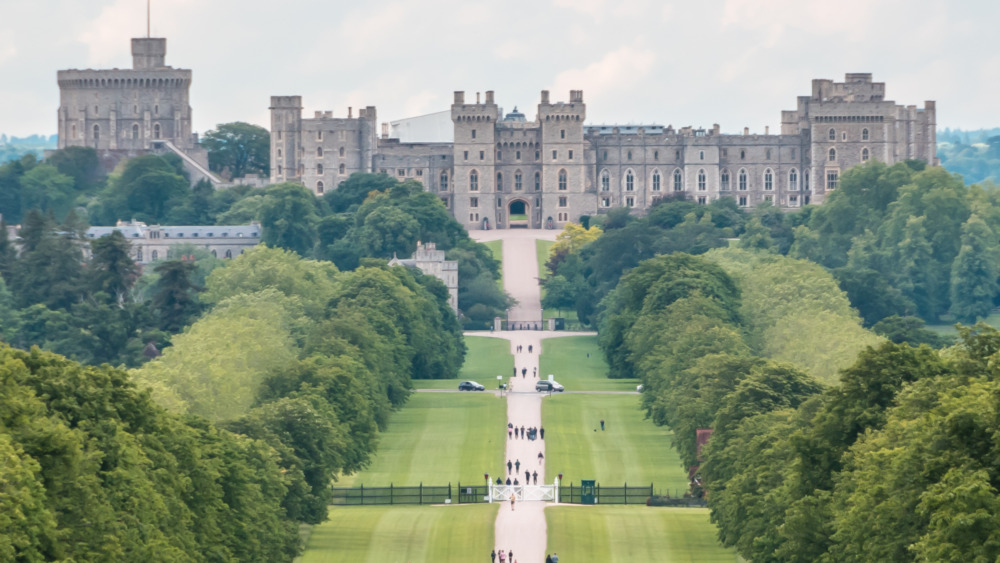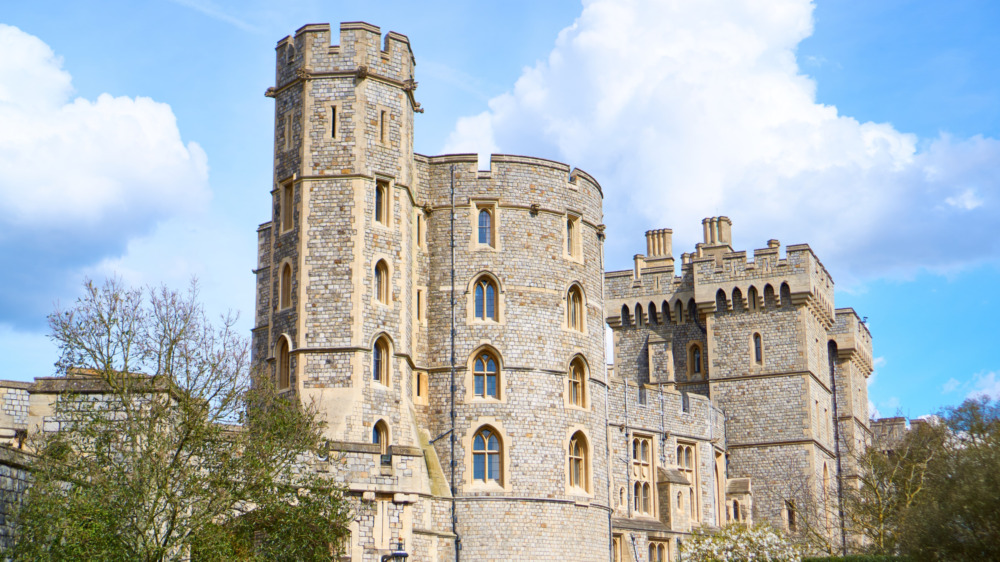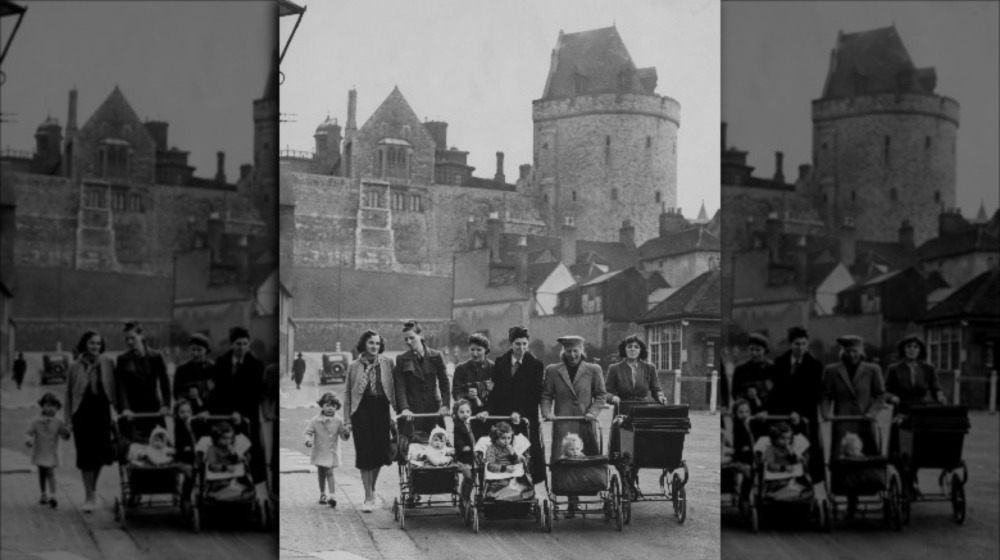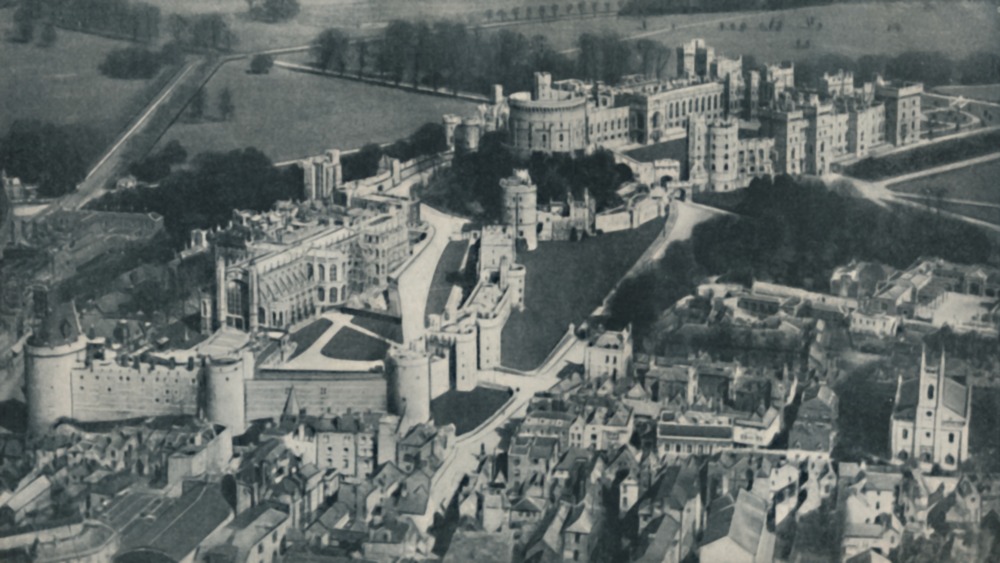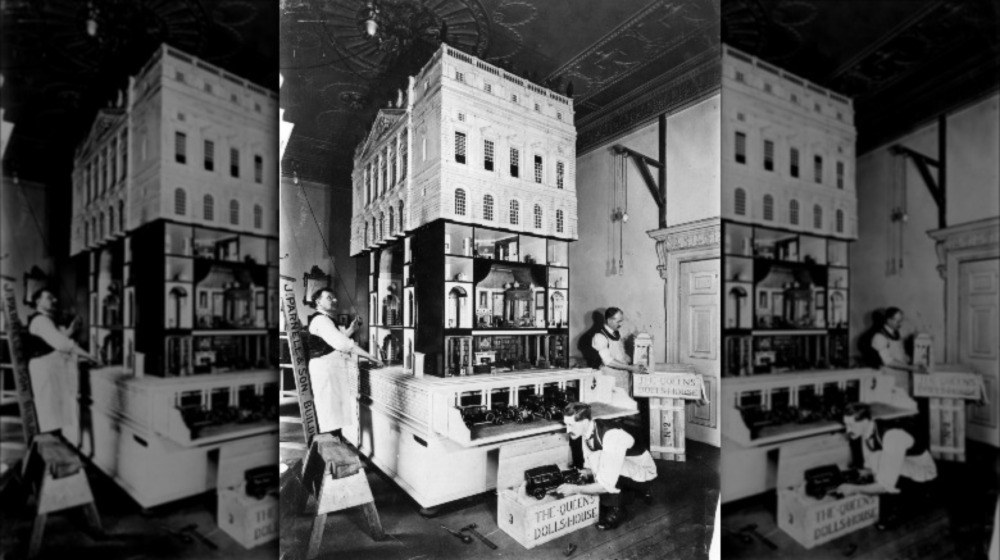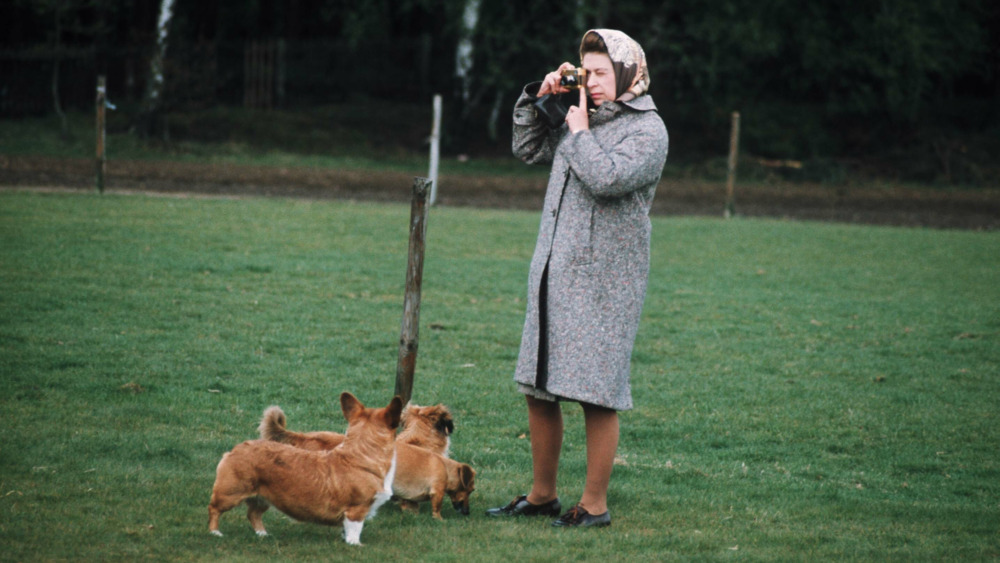Fascinating Facts About Windsor Castle
Twenty-five miles from Central London, on the banks of the snaking River Thames, lie the grounds of Windsor Castle, an opulent residence of the British Royal Family. Windsor's origins go back almost a thousand years. According to the Royal Collection Trust (RCT), the site of the castle was chosen by William the Conqueror, who, after becoming the first Norman King of England following his victory at the Battle of Hastings in 1066, began work on the castle as a fortification in 1070, which was finally completed some 16 years later.
Windsor Castle was first used as a residence by Henry I in the 1100s, according to the British Guild of Tourist Guides, and has since been used by a total of 40 monarchs, per the RCT. Today, Queen Elizabeth II considers Windsor Castle to be her primary residence. Although she splits her time between numerous royal residences, she takes up official residence at the castle for a month at Easter — a period known as the Easter Court — as well as a week in June, when she attends the Royal Ascot races and holds a ceremony called The Order of the Garter, a lunch and chapel service for her Knights and members of the chivalry, according to the official Royal Family website.
Per the same source, Windsor Castle is today considered the "largest occupied castle in the world." Here are some key facts about the historic site that any royal watcher will definitely want to know.
The royal family named themselves after it
Among all the titles bestowed on the British royal family, it can be easy to lose track of what the royals' names actually are. The Royal Family's own website explains the confusion perfectly: "People often ask whether members of the Royal Family have a surname, and, if so, what it is. Members of the royal family can be known both by the name of the Royal house, and by a surname, which are not always the same. And often they do not use a surname at all."
As the website explains, it was not common in previous centuries for royals to use a "second name," as non-royals do, but rather to adopt the name of the country or region over which they held sovereignty. In 1917, however, political circumstances called for a break with tradition. World War I was raging in Europe, with Britain caught in a brutal conflict with Germany that would eventually claim more than 1.1 million British lives. Anti-German sentiment was rife, which proved to be awkward for the British royals, whose lineage was partially derived from a German dynasty, the House of Saxe-Coburg-Gotha.
In response, King George V declared that "all descendants in the male line of Queen Victoria, who are subjects of these realms, other than female descendants who marry or who have married, shall bear the name of Windsor," says the family's website. Queen Elizabeth II made an amendment to the name following her coronation, so that their surname is now officially "Mountbatten-Windsor."
Windsor Castle was used as an air raid shelter
Windsor Castle became even more important to the royal family in World War II. Arguably, the royals' most famous residence is Buckingham Palace, their home in the City of Westminster, London at which the Royal Family hosts some 50,000 guests per year, according to their official website. But during World War II, Buckingham Palace's centrality meant that it became too dangerous for King George VI's young family, which included the future Queen Elizabeth II, who was 13 when the war started. In 1940, the Nazi forces were subjecting the British Isles to the Blitz, a near-constant aerial bombardment of Britain's towns and cities. Over the course of eight months, the Blitz killed 43,000 civilians, and destroyed 1.1 million homes in London alone, according to Britannica.
Buckingham Palace was not exempt from the bombardment. Per the Royal Watcher, the site was hit a total of 16 times during the war years, nine of them direct hits to the building. Windsor Castle thus emerged as a safer home for the royals, its comparatively rural location meaning it was less likely to come under attack. As reported at the time by The Cairns Post, tunnels beneath the castle that were installed at the behest of Queen Victoria were converted into air raid shelters with "modern air defence materials," to help keep the Royal Family and their staff at the site safe from harm.
Windsor Castle: Adolf Hitler's dream house?
Windsor Castle survived the Blitz intact — not a single bomb or missile is believed to have landed within the castle grounds. This is understandable: The castle is a good distance from the city of London, and therefore would be unlikely to fall into the German Luftwaffe's area of attack. However, the castle emerging unharmed from the Nazi's aerial attack has given rise to a more interesting theory: that Adolf Hitler himself saw Windsor Castle as his future home.
Many outlets, such as Veranda, report that the royal family — who had previously met Hitler on state visits before the advent of World War II — were aware of the Nazi leader's "fondness" for the castle, and, in fact, that such knowledge dictated their plan to use Windsor as their primary home for the duration of the war. The truth of the rumors may now be impossible to verify, but seems to persist as a fanciful explanation for the castle's good fortunes during one of the most tumultuous periods of British history.
Windsor Castle is home to the world's largest dolls' house
Described by the Royal Collection Trust as "the largest, most beautiful and most famous dolls' house in the world," Queen Mary's Dolls' House remains one of the most magical attractions for visitors to Windsor Castle, an emblem of the dreams of would-be princesses around the globe.
According to the British Library, the dolls' house was commissioned for the wife of King Henry V, Queen Mary, in the early 1920s, an idea put forward by the King's cousin, Princess Marie Louise. The Princess, an art and design lover, then recruited her friend, the architect Sir Edwin Lutyens, to work on the design.
The dolls' house was completed in 1924, and shown to the public at the British Empire Exhibition of the same year, according to Contemporary British History. Today, the detail of the house continues to captivate: It contains 1,000 miniature art pieces, per Walls With Stories, while the British Library explains how famous writers from the period, including Sir Arthur Conan Doyle and Winnie-The-Pooh creator A.A. Milne, contributed original works to the dolls' house's library of 600 miniature books, some of which are handwritten. The doll's house also contains tiny bottles of real wine, and a working miniature gramophone.
Windsor Castle was a Corgi breeding ground
Royal residences are often associated with dazzling game birds and roaming deer. The grounds of Windsor Castle were first used for hunting by King Edward III in 1368, but the animal that defines Windsor Castle today is undoubtedly the Pembroke Welsh Corgi, a cute breed of short-legged, long-eared dog. Queen Elizabeth II first became enamored with Corgis after receiving one as a gift from her father, George VI, on her 18th birthday, per The Belfast Telegraph. The Queen developed such an affection for the Corgi — who was named Susan — that she has owned them continually throughout her reign, right up until 2018, according to Time, when the last of them, 14-year-old Willow, died. Many of the Corgis that have kept the Queen company throughout her long reign were descended from Susan, a "doggy dynasty" (per The Belfast Telegraph) based predominantly in the grounds of Windsor Castle.
In March 2021, in was reported (per My London) that Queen Elizabeth II — who is currently in mourning over the death of her husband, Prince Philip, who died last week, aged 99 — recently adopted two new Corgi puppies, the first in three years to inhabit Windsor Castle.
